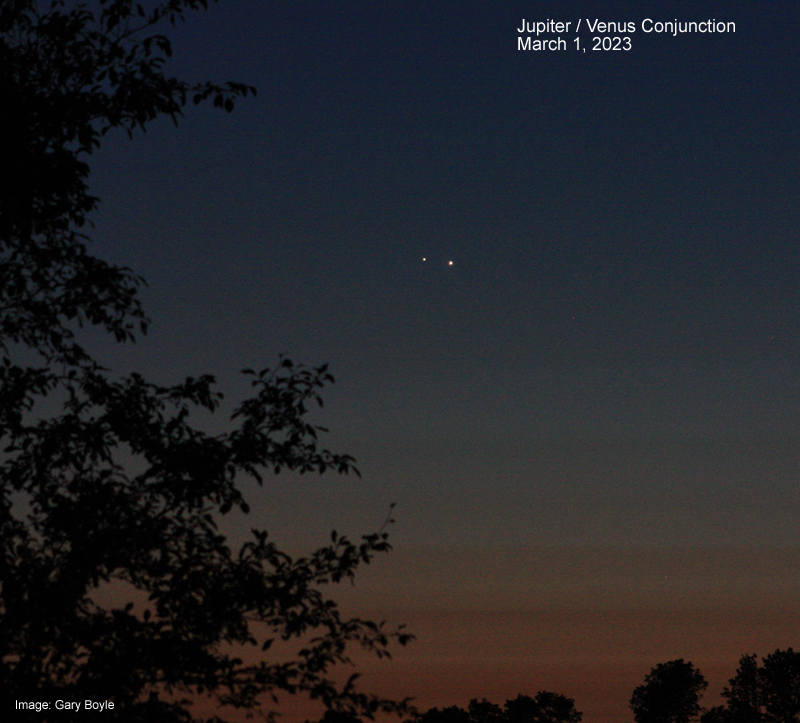Celestial Dance and a Marathon
For thousands of years, stargazers looking up would notice some somewhat bright objects that would track slowly across the sky over weeks, months, and even years. The Greek translation of the planets is the “wanderers”. Other than the bright moon, the planets have always captivated those that would see and follow their slow dance.
Over the past few weeks, the two brightest worlds of our solar system have been putting on a show. As their path around the sun causes the inner planets to orbit quicker than the outer ones, they at times, meet up in the same area of the sky. This is called a conjunction.
The most spectacular of all conjunctions is the one involving Jupiter and Venus. Their brightness draws people’s attention as they drive home from work or out for a stroll. This celestial dance concludes on the evening of March 1 when the two come together with a separation of the width of the full moon. Since my first sighting of such a conjunction in 1971, I have dubbed these “spooky eyes” like the old Bugs Bunny cartoon where two eyes would peer from the darkness.

These Jupiter/Venus conjunctions do not occur at set intervals. In the past, they have come together in as little as thirty days from the previous meeting and ranging up to two and a half years. In 2015, there were three of these conjunctions. The next time these two will be seen together will be in the eastern pre-dawn sky in August of 2025.
March is also the time of year when amateur astronomers can take advantage of a small window to spot all 110 Messier objects. These consist of star clusters – both open and globular as well as galaxies and nebulae. This year’s new moon occurs on March 21 so either weekend will be in your favour. To maximize capturing all or most in a single night, one must start with locating M77 – a barred spiral galaxy located 47 million light-years away as the dusk settles still in the solar glare after sunset. Your tour will as the eastern sky gets brighter as you scramble to locate the globular cluster M30. Use these charts to locate the objects. Happy hunting.
Until next month, clear skies everyone.
Gary Boyle
